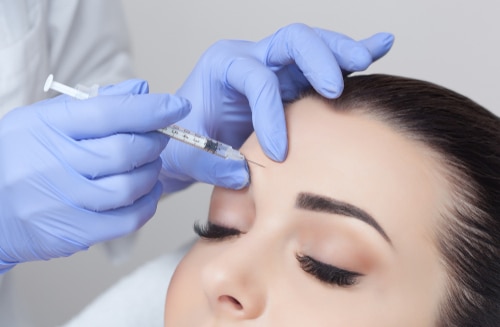Botox and Xeomin are both popular injectable treatments used to reduce the appearance of wrinkles and fine lines on the face. While they are both classified as neuromodulators, there are some differences between the two treatments that patients should be aware of before deciding which option is right for them.
What is Botox?
Botox is a brand name for the botulinum toxin type A, a neurotoxic protein produced by the Clostridium botulinum bacteria. Botox works by blocking the signals between nerves and muscles, preventing muscle contractions, and reducing the appearance of wrinkles and fine lines on the face.
Botox was first approved by the FDA in 2002 for treating frown lines between the eyebrows (glabellar lines). Since then, it has been approved for several other cosmetic and medical uses, including the treatment of crow’s feet, forehead wrinkles, and excessive sweating.
What is Xeomin?
Xeomin is also a brand name for the botulinum toxin type A. Like Botox, Xeomin works by blocking nerve signals to muscles and reducing the appearance of wrinkles and fine lines on the face.
However, Xeomin differs from Botox in a few ways. First, Xeomin is a “naked” injectable, meaning it does not contain any additives or preservatives. This makes it a purer form of botulinum toxin type A than Botox, which contains additional proteins and additives.
Second, Xeomin may have a faster onset time than Botox. While Botox typically takes 3-5 days to take effect, Xeomin may start to work within 24-48 hours after injection.
Finally, Xeomin may have a lower risk of causing an allergic reaction in patients. Because it does not contain any additional proteins or additives, Xeomin is less likely to cause an immune response in the body.
Botox vs. Xeomin: How do they compare?
While Botox and Xeomin are both used to reduce the appearance of wrinkles and fine lines on the face, there are some key differences between the two treatments.
- Composition
Botox and Xeomin are both made from the same botulinum toxin type A. However, Botox contains additional proteins and additives, while Xeomin is a “naked” injectable.
Some doctors and patients prefer Xeomin because of its purity, which may reduce the risk of side effects and allergic reactions.
- Onset time
Botox typically takes 3-5 days to start working, while Xeomin may start to work within 24-48 hours after injection.
For patients who want to see results quickly, Xeomin may be a better option than Botox.
- Results
Both Botox and Xeomin can provide similar results in reducing the appearance of wrinkles and fine lines on the face.
However, some studies have suggested that Xeomin may have a longer-lasting effect than Botox. In a study published in the Journal of Cosmetic Dermatology, patients who received Xeomin had a longer duration of effect than those who received Botox.
- Price
The cost of Botox and Xeomin can vary depending on the location, the number of units required, and the individual practitioner.
In general, Xeomin may be slightly less expensive than Botox. However, patients should always consult their doctor to determine the best treatment plan for their needs and budget.
- Allergies
Because Xeomin is a purer form of botulinum toxin type A than Botox, it may be less likely to cause an allergic reaction in some patients.
However, it’s important to note that allergic reactions to both Botox and Xeomin are rare. Most patients tolerate both treatments well and experience few side effects.
- Side effects
Like any cosmetic procedure, both Botox and Xeomin carry the risk of side effects.
Common side effects of both treatments include redness, swelling, and bruising at the injection site. These side effects are usually mild and go away within a few days.
More serious side effects, such as muscle weakness, difficulty speaking or swallowing, and allergic reactions, are rare but can occur with both Botox and Xeomin.
Patients need to discuss any concerns or questions about potential side effects with their doctor before undergoing treatment.
Which Treatment is Right For You?
Deciding between Botox and Xeomin can be challenging, as both treatments offer similar results in reducing the appearance of wrinkles and fine lines on the face.
Ultimately, the decision may come down to personal preference and individual needs. Some patients may prefer Xeomin because of its purity and faster onset time, while others may choose Botox because of its proven track record and long history of use.
It’s important to consult a qualified and experienced practitioner who can help determine which treatment is right for you based on your goals, medical history, and budget.
Additionally, patients should always ensure that their practitioner is licensed and trained in administering injectable treatments like Botox and Xeomin. This can help ensure the safest and most effective results possible.
In conclusion, Botox and Xeomin are both popular injectable treatments used to reduce the appearance of wrinkles and fine lines on the face. While they are both neuromodulators and work similarly, there are some differences between the two treatments that patients should be aware of before deciding which option is right for them.
Ultimately, the decision may come from personal preference, individual needs, and budget. It’s important to consult a qualified and experienced practitioner who can help determine which treatment is right for you based on your goals, medical history, and budget.

